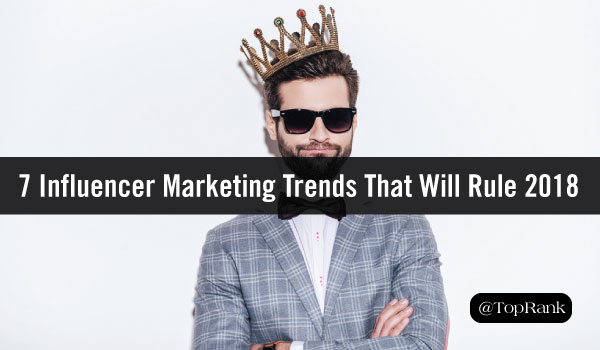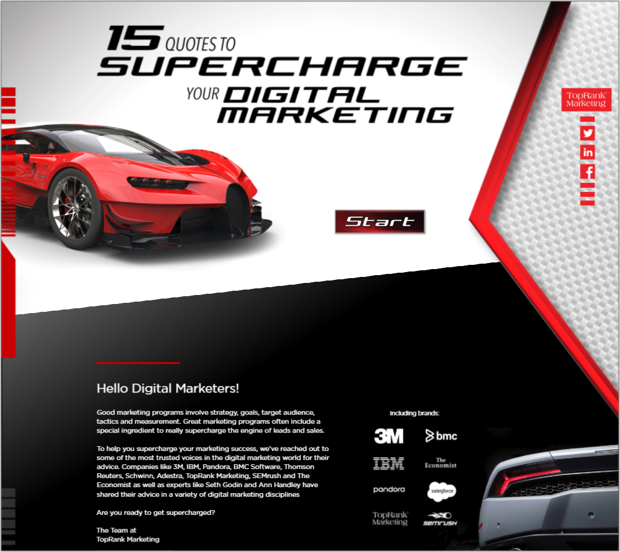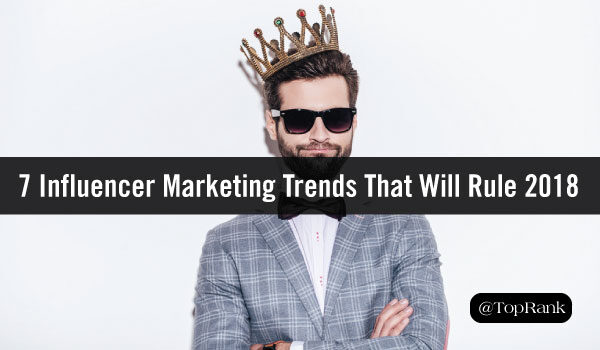
While influencer marketing boomed in 2017, it’s been on the rise for a full decade. In fact, we first posted about it in 2008 after we attended a session at SES San Jose on social media analysis and tracking. Ten years later and influencer marketing has evolved from a rising trend into a proven marketing strategy, causing more and more B2C and B2B companies to start influencer programs of their own.
As influencer marketing has gained steam, it’s earned a more dedicated spot in the digital marketing mix and become more approachable in the eyes of marketers. As our own CEO Lee Odden, a longtime advocate for influencer marketing, regularly says:
“Everyone is influential about something.”
But as marketers dive deeper into the influencer marketing waters, they wonder how the tide will change and ultimately force them in a different direction.
Having executed influencer marketing programs for both B2B and B2C brands for the past several years, we’ve had a front row seat to the evolution of influencer marketing. To give you a glimpse into where influencer marketing is already heading and help you stay on top of your influencer game, here are seven influencer marketing trends that are taking over 2018.
#1 – Full steam ahead for influencer marketing programs.
We touched on it briefly earlier, but as influencer marketing becomes more approachable with tools like Onalytica, Traackr, BuzzSumo, and others, it will also become more popular. For 2018, this means that more and more brands will come online with influencer marketing programs, including both B2C and B2B brands.
But what does this mean for your influencer marketing strategy?
It means your competition could soon be doing their own influencer marketing campaigns, making it all the more important that your campaign sets itself apart from the rest. Through unique influencer relationships, helpful insights, and new media types, you could take your influencer campaign from “first” to “best.” Or both. Both is good.
Read: 20 Inspiring & Actionable Influencer Marketing Tips for The Modern Marketer
#2 – Brands are looking to be bold, loud, and different.
With more B2B and B2C brands amping up their influencer marketing, brands are thinking of new and innovative ways to differentiate their campaigns. With great content serving as the foundation for any campaign, brands are hoping to stand out by offering unique, bold, and intuitive user experiences, generating an added level of excitement and further engaging audiences.
To level up our own influencer marketing user experience, we created an interactive infographic featuring 15 quotes from digital marketing influencers to generate awareness of our agency prior to the Digital Marketing Summit in Minneapolis this past summer.
This not only helped engagement with our audience, but it also helped us create something that our influencers were proud to contribute to and share.

#3 – Brand focus on business results.
At the beginning of its time, influencer marketing was all about reach and awareness. By tapping into an influencer and leveraging that relationship, you could gain the ear of an entirely new audience. Multiply that affect with the number of influencers you work with, and you have a rapidly growing audience.
Influencer marketing is no longer just about audience growth, though. Brands are and will turn to influencer programs to drive conversions and engagement, too. What will that look like? From our vantage point, you’ll see an influx of influencer and brand hosted webinars, live stream Q&A’s, endorsements, and other bottom of funnel influencer content.
#InfluencerMarketing is no longer just about audience growth - @aleuman4 Share on X#4 – Influencers turned brand ambassadors.
What’s one thing brands are missing when it comes to influencers and their relationships? Oftentimes, it’s exclusivity. Having an influential thought leader all to yourself is a promising premise as it means you are their sole partner in your industry. Well, brands are realizing that this opportunity exists and are getting ready to establish more long-term relationships with influencers.
No longer seen as a one-off campaign strategy, brands will start to reach out to influencers for more long-term partnerships. This will result in influencers adopting the role of “brand ambassador” and serve almost as an extension of your internal marketing team.
To do this within your own influencer programs, you need to develop your relationships with influencers instead of just reaching out when there’s a need. For example, you can create a VIP program or hub where your influencers can come together and collaborate, share ideas, and become a bigger part of your brand. With this continued nurturing and collaboration, influencers will become more like spokespeople, representing the brand at events, in videos, and through their own content.
#Influencers will adopt the role of brand ambassador and become an extension of your internal #marketing team - @aleuman4 Share on X#5 – Campaigns with more money, more capabilities.
Remember when we said that influencer marketing is popular, forcing brands to up their influencer marketing game? One surefire way brands can try and elevate their campaigns is through an increased influencer marketing budget. In fact, you can bet on it. In our Influencer 2.0: The Future of Influencer Marketing research report, 55% of marketers reported in that they plan to increase their influencer marketing budget in the coming year.
With deeper pockets, brands can invest more into developing their influencer relationships and in creating more high-quality content. For example, brands have more freedom to offer gifts to their influencers in an effort to strengthen their relationships. Plus, an increased budget allows brands to create more “expensive” content like a video series, interactive eBooks, motion graphics, and more.
Read: 5 Examples of Influencer Marketing in Action Across the Full Customer Journey
#6 – Influencers are being strategic with their own brand.
As the influencer marketing bandwagon continues to roll, influencers have the ability to be more strategic in aligning themselves with different B2B and B2C brands. With more brands approaching them for their contributions, they can be more thoughtful with the partners they choose to work with and how the partnership will help them grow their personal brand and network.
Because of this, your programs will need to be custom-made for the influencers you want to work with. For example, one of our clients was looking to target C-suite leaders at law firms, which lead to the creation of a customized influencer eBook campaign that featured influencers in the legal profession, and delivered extremely thoughtful and relevant to our audience.

If there isn’t a perfect fit or relevant value that you’re bringing to the table, your ideal influencers will move on to another brand that does. The influencer has the power of choice in this scenario, so make sure to research your influencers beforehand to create a campaign they can’t say “no” to.
#7 – Influence transcends platforms.
Now that influencer marketing programs are beginning to expand in size, budget, and tone, brands are also looking to expand their programs onto new platforms and channels. This helps extend the reach of their influencer marketing programs, enabling brands to engage new audiences that were otherwise lost to them.
What kinds of channels are we talking about? Periscope, Snapchat, Instagram, YouTube, and others come to mind as it can be challenging for brands to build up audiences on them — especially if your brand voice is more sophisticated.
Become Influencer Marketing Royalty
As you head off to execute your influencer marketing programs using the trends above, take advantage of these top influencer marketing tools to track your influencer relationships, performance, and more.



